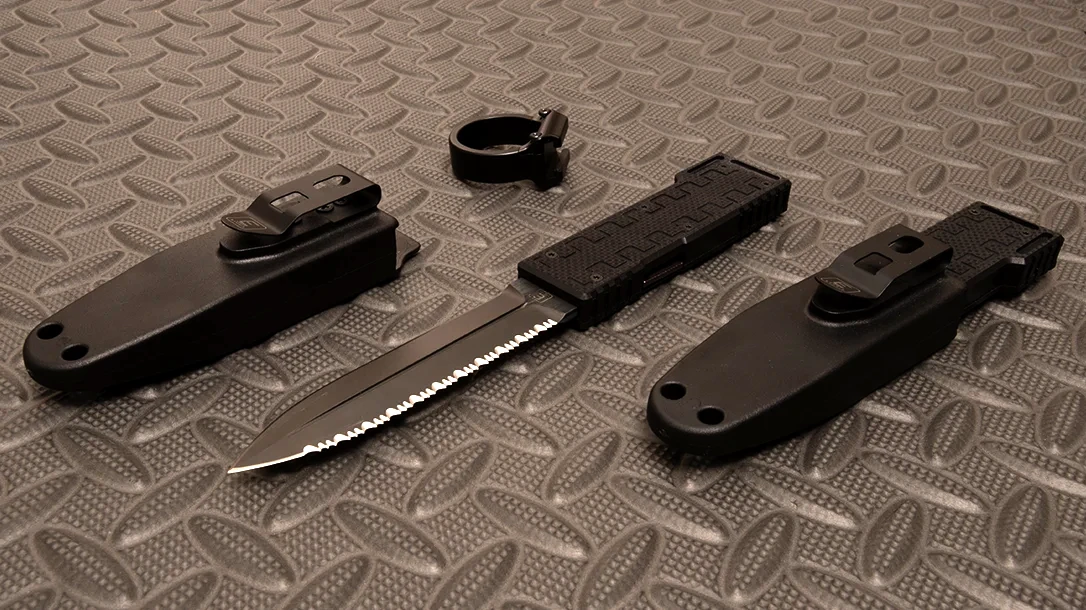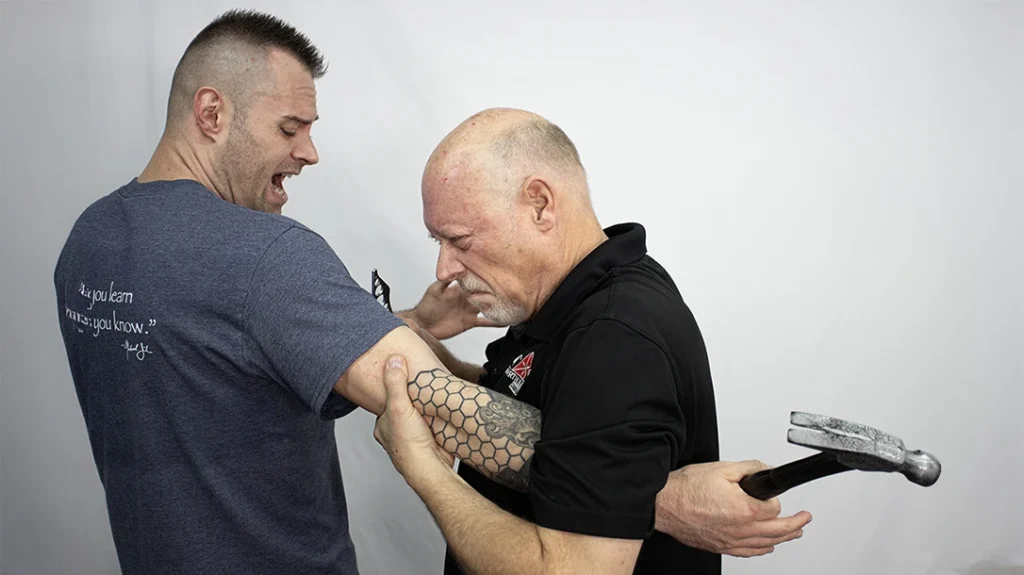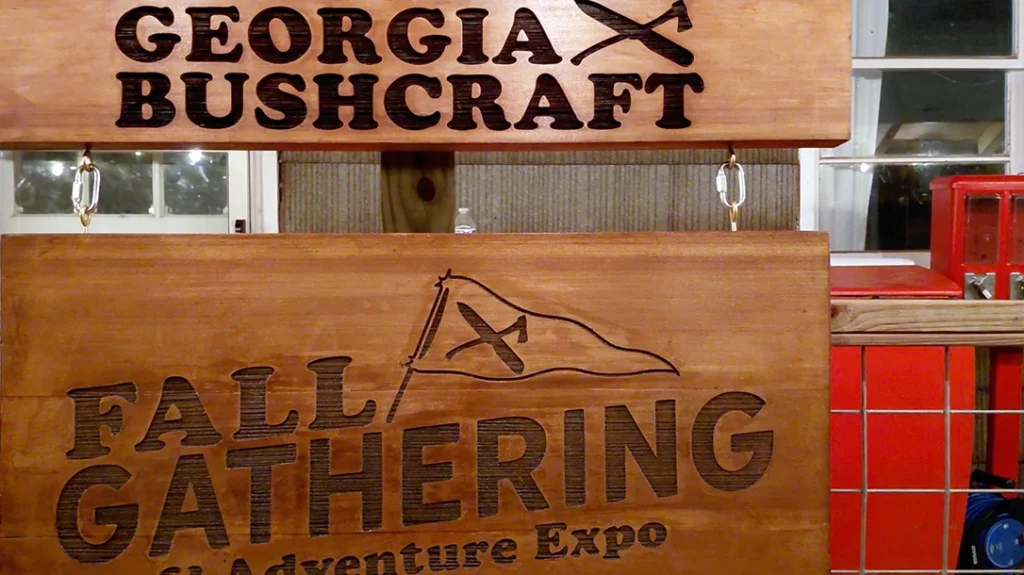There are many talented knifemakers and designers out there. However, when it comes to personal-defense knives, Allen Elishewitz stands out. In addition to almost four decades of knifemaking experience, he is also a U.S. Marine Corps veteran and an extremely skilled martial artist and shooter. When Elishewitz designs a knife, like the Black Box, it is backed by a serious combative skill set.
The Elishewitz Black Box
Allen’s unique “take” on defensive knives is clearly apparent in one of his latest creations, his “Black Box.” It combines elements of an out-the-front, a gravity knife, a boot knife, and the classic folding Bowie. The result is something truly different and uniquely functional.
Old-School Inspiration
The inspiration for the Black Box concept came from a distinctive style of folding Bowie Knife. Dating back to the mid-19th century, these knives resembled conventional lock-blade folders, but with much longer blades. When closed, the blade would extend well past the butt of the handle. Opened, you had a legit, full-sized Bowie Knife.
Advertisement — Continue Reading Below
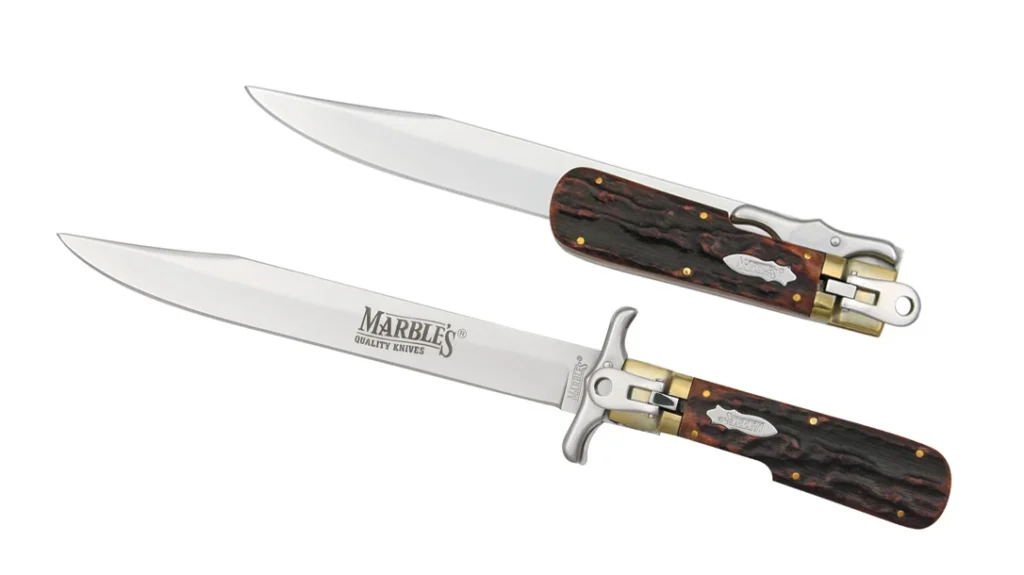
The closed knife carried in a sheath and was much less cumbersome than a fixed blade of comparable size. It could also be drawn quickly and used immediately in the closed position. After an initial cut or thrust, the blade could be snapped open to finish the fight.
Still manufactured by Marbles, the folding Bowie design had one major drawback. The lock strength of old-school folders left a lot to be desired—especially when you add the leverage of an extra-long blade.
Advertisement — Continue Reading Below
The Masters of Defense Phoenix
Truth be told, the Black Box was not Eishewitz’s first attempt at adapting the short-handle/long-blade concept to a modern design. In the early 2000s, he designed a knife called the Phoenix for the Masters of Defense knife company. It applied the same out-the-front principle as the Black Box, but had a plunge-style button lock.
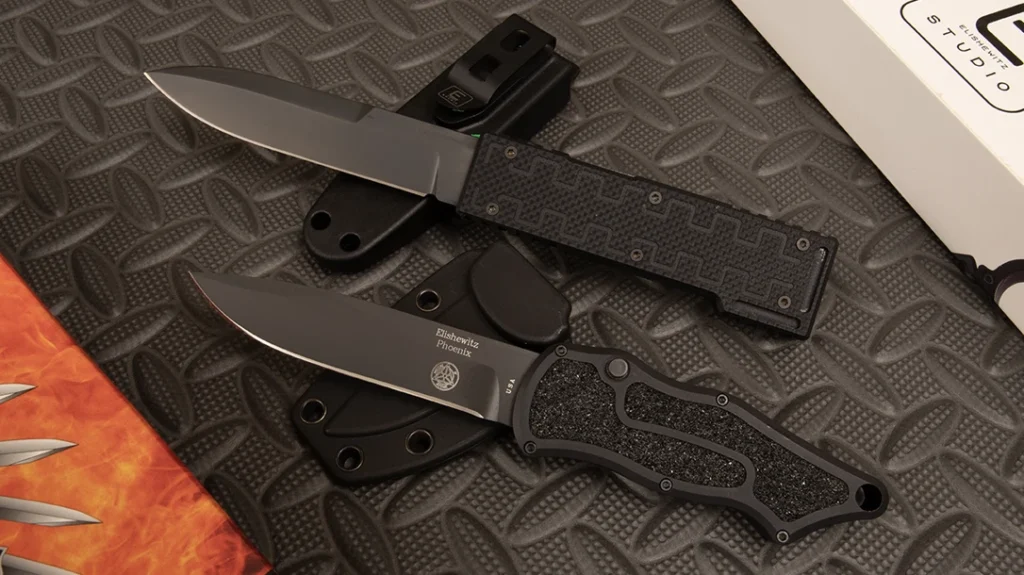
The button had to be depressed at the same time the knife was drawn to extend the blade. This limited the Phoenix to a standard-grip draw and, along with a lackluster marketing campaign, limited the success of the design.
Advertisement — Continue Reading Below
The Black Box
Allen had a number of reasons for revisiting the Phoenix concept. First, based on his extensive edged-weapons training, he firmly believes that the “fixed blade is king.” When it comes to strength, simplicity, and ease/speed of deployment, it reigns supreme. Its disadvantage, however, is that it’s more challenging to carry and conceal than a folder.
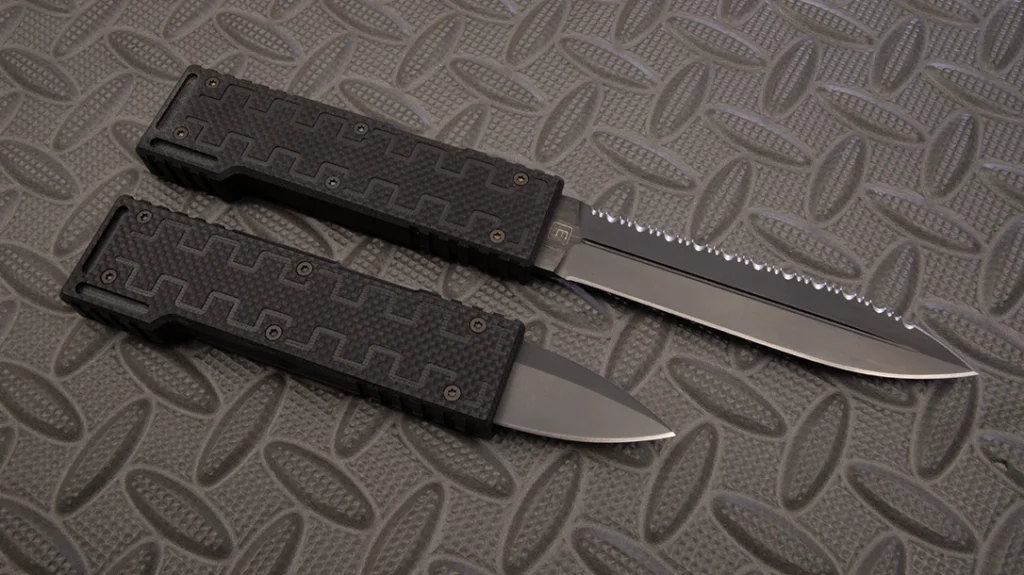
Elishewitz’s solution was to create a knife with a collapsible blade that, like the folding Bowie, was not contained completely within the handle. In the retracted position, about 1.5 inches of the Black Box’s blade remains exposed.
Advertisement — Continue Reading Below
That length was not an accident. It still allows the blade to achieve the depth of many key anatomical targets. When extended, the blade locks securely into place and offers a formidable four inches of length. This brilliant design allows a knife with an overall length of eight inches, carried in a package that is only 5.5 inches long.
Inside the Box
The magic that allows this to happen is the patent-pending mechanism within the rectangular handle that gives the Black Box its name. The handle frame is machined from tough 7075 aircraft-grade aluminum and Type III hardcoat anodized. Both sides are capped by peel-ply-textured G-10 scales secured by countersunk Torx® screws.
The painstakingly machined frame features a channel that allows the blade to slide freely forward and back. Its reverse side includes a machined longitudinal slot. This slot indexes a pin in the blade tang to limit the blade’s travel and provide a solid stop when extended. The obverse side of the frame is open and faces a titanium liner nested in that side’s G-10 scale.
Advertisement — Continue Reading Below
When the blade is extended, the spring liner moves laterally to engage a beveled ramp on the base of the tang. The liner is notched in the center, so its outer surfaces provide widely spaced points of contact. Opposed by the solid stop of the blade pin, they create an extremely robust triangular lock-up. The lock’s security is further enhanced by the tight tolerances of the mating parts and the generous contact area of the tang within the frame.
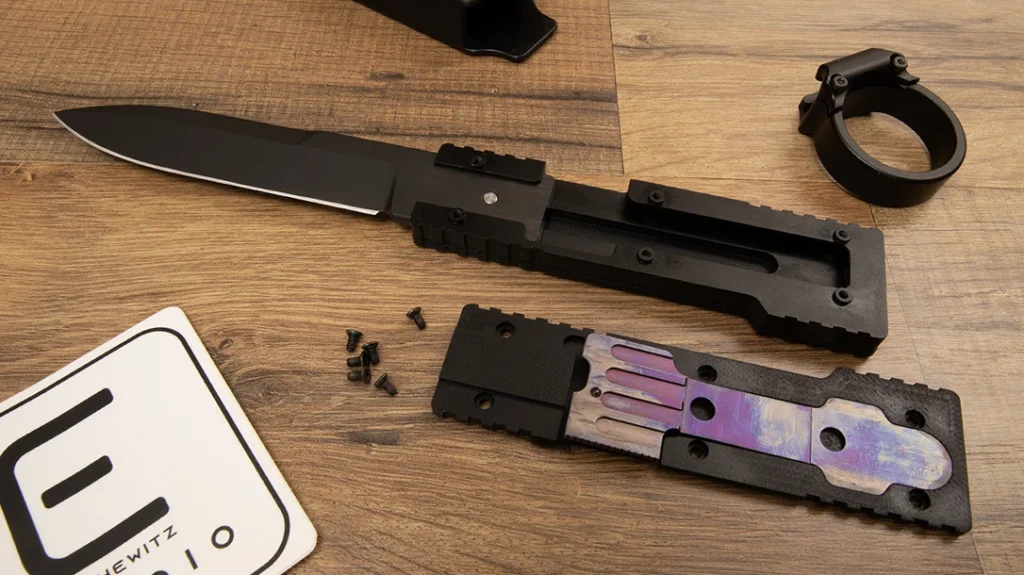
Folding knife lock geometry generally consists of the pivot pin, a stop pin, and some type of spring-driven “wedge” surface. Although there is significant surface contact on the sides of the blade, there is typically minimal support in the plane of the blade. That’s not the case with the Black Box.
Advertisement — Continue Reading Below
The frame channel completely surrounds the top and bottom surfaces of the tang and a significant area of the sides. That generous contact area, together with the stout geometry of the lock, offers tremendous strength.
To retract the Black Box’s blade into the collapsed position, simply move the liner laterally to release the lock.
Blade Options
Elishewitz offers two basic blade configurations for the Black Box. One is a double-edged dagger, and the other is a single-edged spearpoint profile with a long, unsharpened swedge. Both are crafted from CPM® 20CV® particle metallurgy stainless steel and feature a non-reflective Diamond-Like Carbon (DLC) coating. Both patterns feature perfectly symmetrical flat-ground bevels and are available with plain edges and the option of various serration patterns.
Advertisement — Continue Reading Below
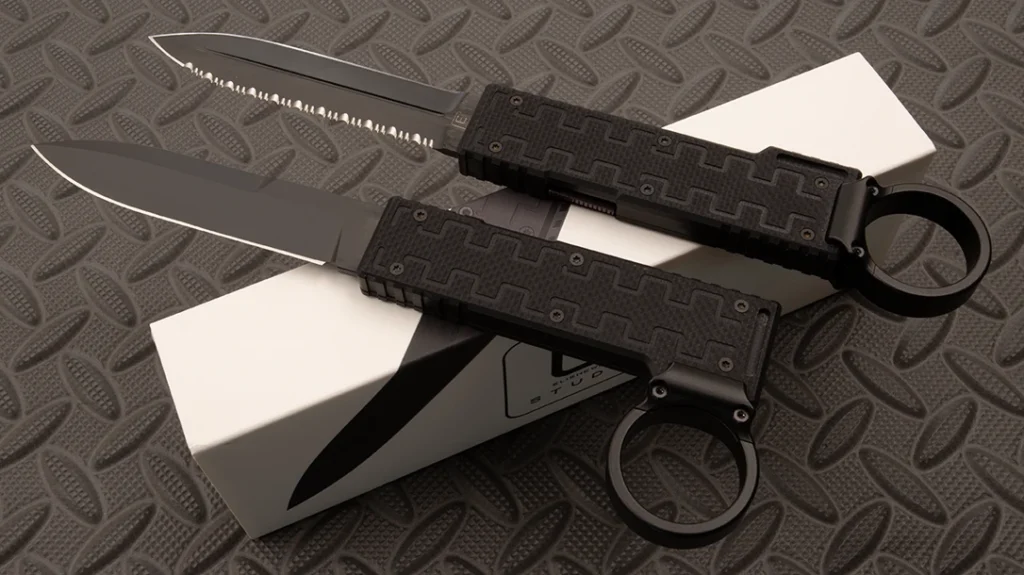
The factory edges on both sample knives I received were shaving sharp. Their terminal edge bevels were also of uniform width along their entire length and symmetrically balanced.
Carrying the Black Box
The other secret to the Black Box’s operation is its unique sheath. Its one-piece design is injection molded from fiberglass-reinforced nylon. Inside the lower portion of the internal cavity, there are two slots in line with the plane of the knife’s blade.
Advertisement — Continue Reading Below
When the collapsed knife is sheathed, the slots “grip” the blade. As it is drawn, they hold the blade in place until it achieves its extended, locked position, then release it to clear the sheath.
Unlike the Phoenix’s button lock, this brilliantly simple design does not require operation of the lock release as the knife is drawn. It therefore allows the Black Box to be drawn with any grip.
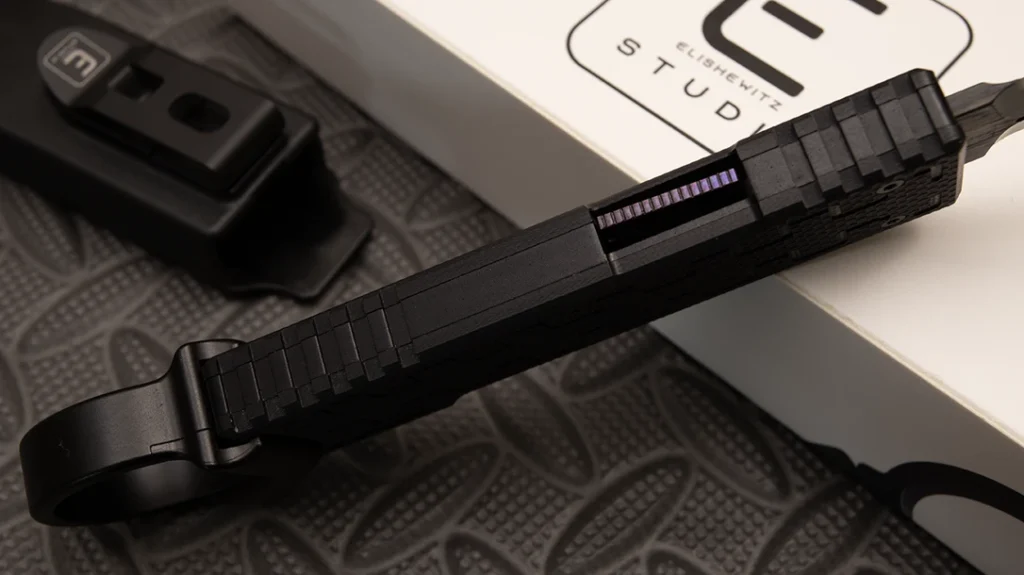
Intended primarily for inside-the-waistband carry, the Black Box sheath includes a stout spring-steel clip. It is purpose-designed to clip to the clothing itself and doesn’t require—nor will it attach to—a belt.
The sheath’s symmetrical design allows the knife to be placed with the edge facing either direction. The tip also includes two holes for the “static line” style of carry, using a short loop of paracord.
Ring or No Ring: The Choice is Yours
The handle of the Black Box is sized to fit most hands comfortably. Its simple, rectangular shape also accommodates all combative grip styles equally. However, the design also offers another option: a clever removable ring that is also patent pending.
Having spent time in uniform, Elishewitz appreciates the deep-concealment advantages (the original functionality) of the SOCP Dagger’s ring. His extensive training in Southeast Asian martial arts also gives him a deep understanding of the karambit.
Even more important than that, however, he is extremely practical and analytical. His reasons for adding a ring to the Black Box—and making it both movable and removable—were therefore dead simple.
When you’re fighting for your life, weapon retention is critically important. Additionally, as we age, we lose grip strength. The Black Box ring addresses both those issues by significantly enhancing grip security. It does this even better by providing two mounting positions: one at the end of the handle and one on the side of the handle.
Mounted at the end, it provides a deep-concealment draw option and extends the length of the handle for large hands. On the side, it provides a more comfortable index-finger grip position and can also be used as a striking “knuckle.”
In this position, it also offers a prominent “hook” to draw the knife without inserting your finger into the ring. When used with the single-edged Black Box, it is a useful tactile reference for edge orientation.
Machined from aircraft-quality aluminum and hard anodized, the ring mounts with two Torx screws. Beautifully machined and thoughtfully radiused, it also offers an exceptionally wide contact surface. Attaching the ring to the end of the handle increases the overall extended length of the Black Box to 9.3 inches.
Not a fan of rings? No sweat. Just remove it.
Putting Theory into Practice
I prefer to carry a fixed blade in the crease of the hip using “static cord” carry. This allows it to be drawn in any direction and clear the sheath safely away from your body. The smaller envelope of the Black Box and its slim sheath made it extremely comfortable with this style of carry.
The texture of the G-10 scales offered a positive draw and a secure grip without being too abrasive. Countless draws to both standard and reverse grip were very quick and reliable.
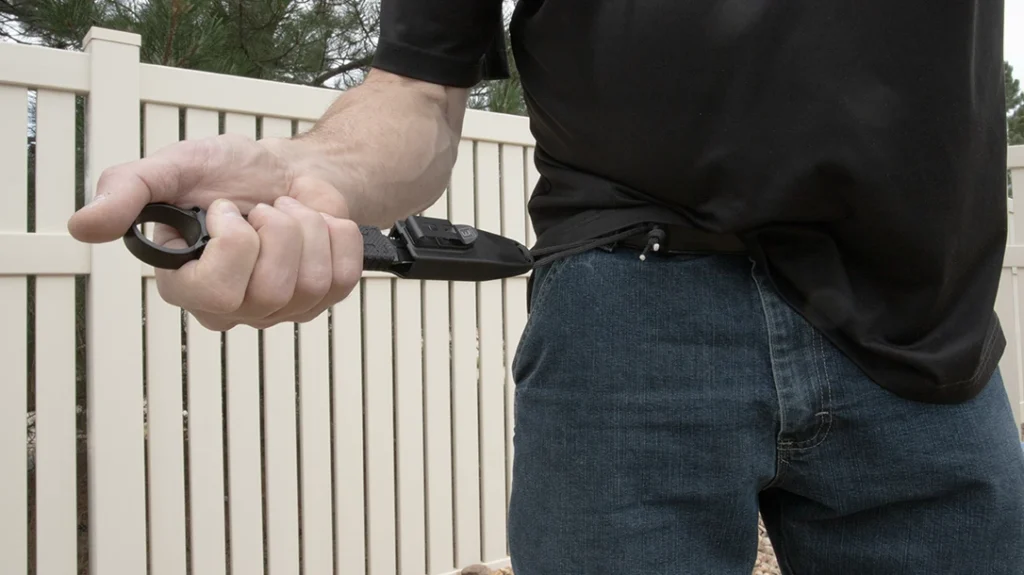
With the double-edged Black Box, blade extension was 100 percent positive. With the single-edged version, however, I did experience some failures of the blade to extend automatically. These were easily resolved with a quick flick of the wrist.
A variety of cutting tests confirmed both versions of the Black Box cut with impressive effect. Similarly, thrusts into layered cardboard targets penetrated extremely well. To really test the lock’s integrity, I also performed multiple hard thrusts into a 2X6. The lock held strong and, afterward, the blade remained tight and wobble-free.
All told, the Black Box offers the speed, strength, and reliability of a serious fixed blade in a significantly smaller, more concealable package. A truly innovative approach to defensive knife design, it retails for $275.00 and is available from ElishewitzKnives.com.
